The Burrow
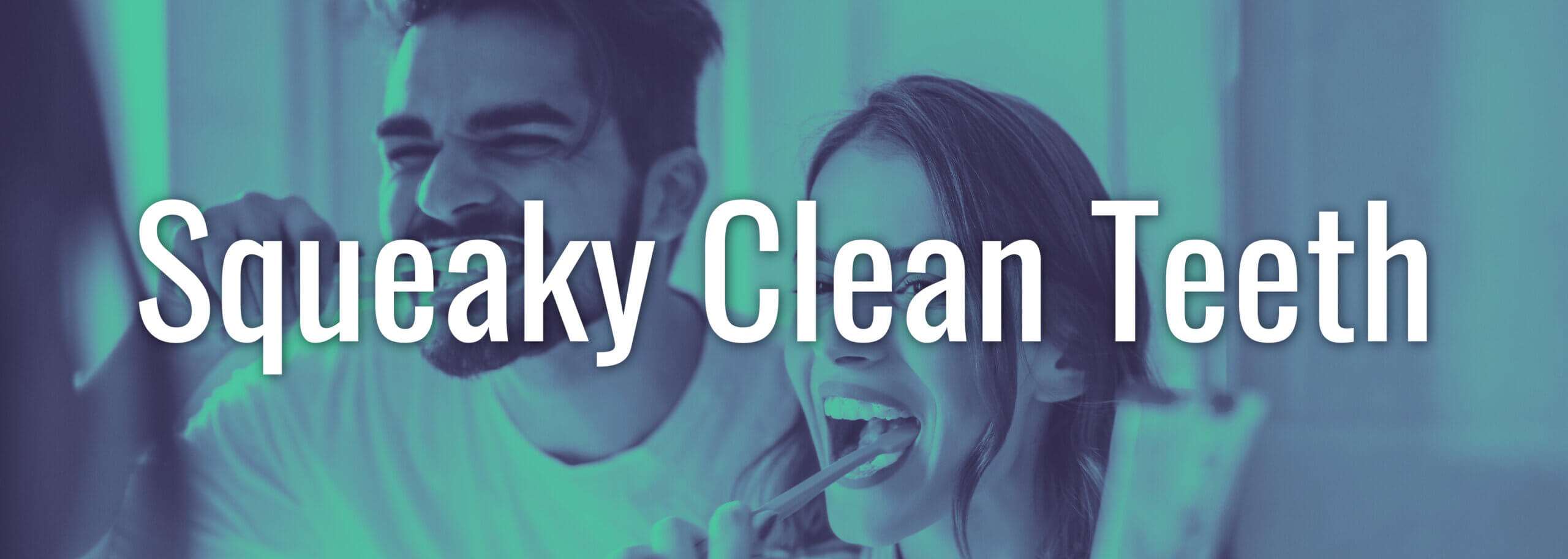
Dental hygiene is something that we learn to maintain early on in life, and something we ought to do day in and day out. Yet is that the case for most people?
To find out how squeaky clean those pearly whites are – and whether people are making use of their dental extras in their private health policy – the health insurance experts at Compare the Market surveyed more than 3,000 Australian, Canadian and American adults on their dental hygiene.
It has been drilled into us from early on that we need to brush twice a day for clean and healthy teeth, however in the latest findings from Compare the Market, only 41% of Australians, 40% of Americans and 36% of Canadians brush their teeth twice daily!
A similar number across the three countries stated that they almost always brush and clean their teeth, while 2% of Australians, 3% of Canadians and 4% of Americans admitted to almost never brushing their teeth.
Gender also seems to make a difference in how strictly people maintain dental health, with a clear distinction that shows more women brush their teeth twice daily, as opposed to their male counterparts. Not only that, men across Australia and Canada are twice as likely to never brush their teeth. In America, both women and men had similar levels of not cleaning their chompers very often.
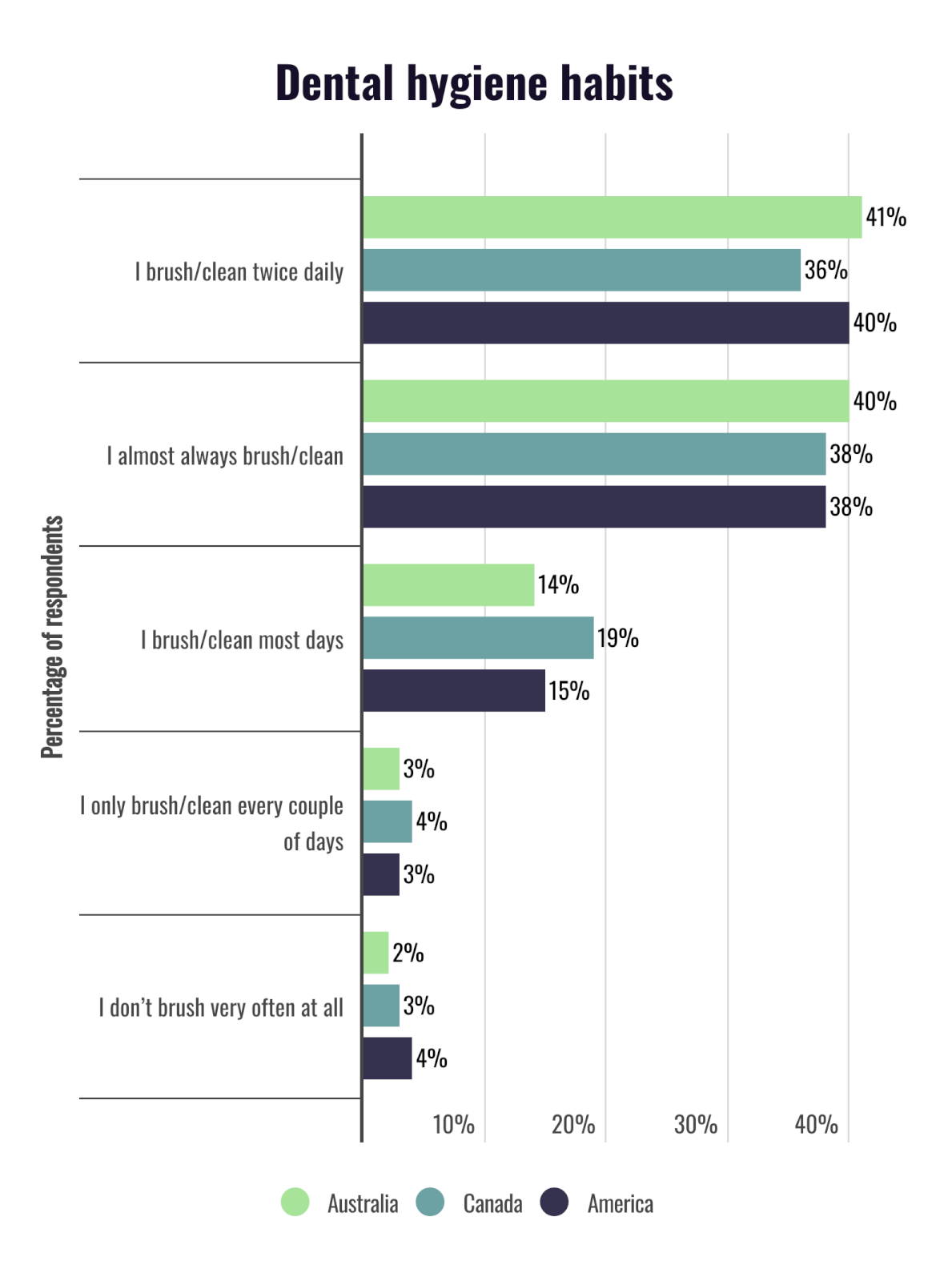
Click through the below tabs to see a visual breakdown of gendered results per country.
Visiting the dentist can be a well-feared life admin task, but not going to one for a while can be even worse for your health than if you bit the bullet each year and had an annual check-up.
Australia’s results are quite surprising, given that our results show that just under half of Australian respondents had visited the dentist in the past year (32% in the past six months, 17% in the past year). While we didn’t survey children, we thought it was interesting to note that some dental appointments are given free of charge or at a limited cost to children across the country under the Child Dental Benefits Schedule (CDBS)1, as well as many state-based programs that are on hand within state schools.
Canadians are the best at keeping on track with their dental appointments with 57% of respondents having visited the dentist in the past year (37% in the past six months, 20% in the past 12 months). A respectable number of Americans have also visited the dentist, with 37% of respondents going in the past six months, and another 17% took the opportunity to get their teeth checked in the past year.
The survey also found some interesting insights from age groups across the three countries, with Australians and Americans aged 18-24 years the most likely to have never visited a dentist, while in Canada, it was those aged 55-64 years that have skimped out the most.
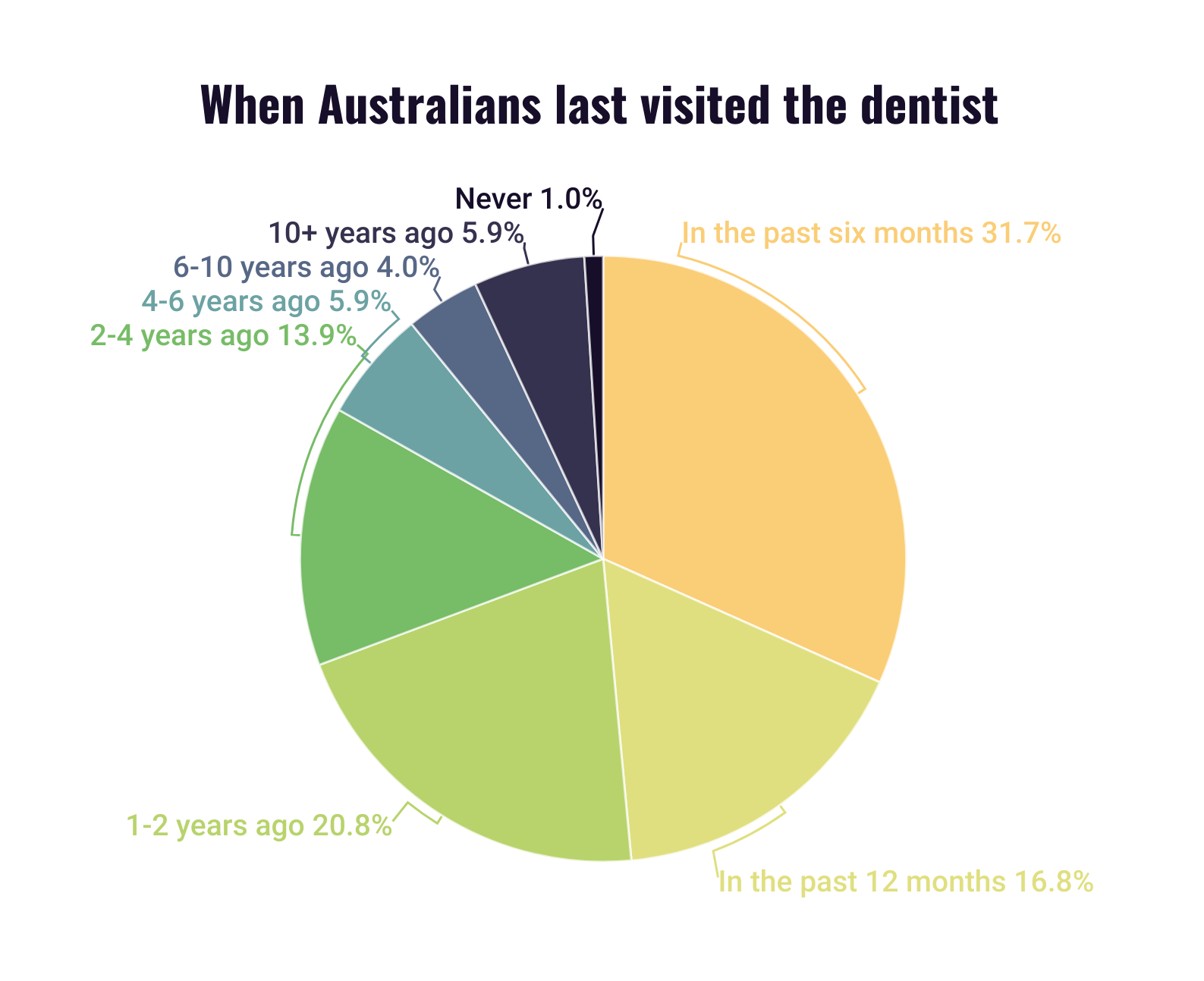
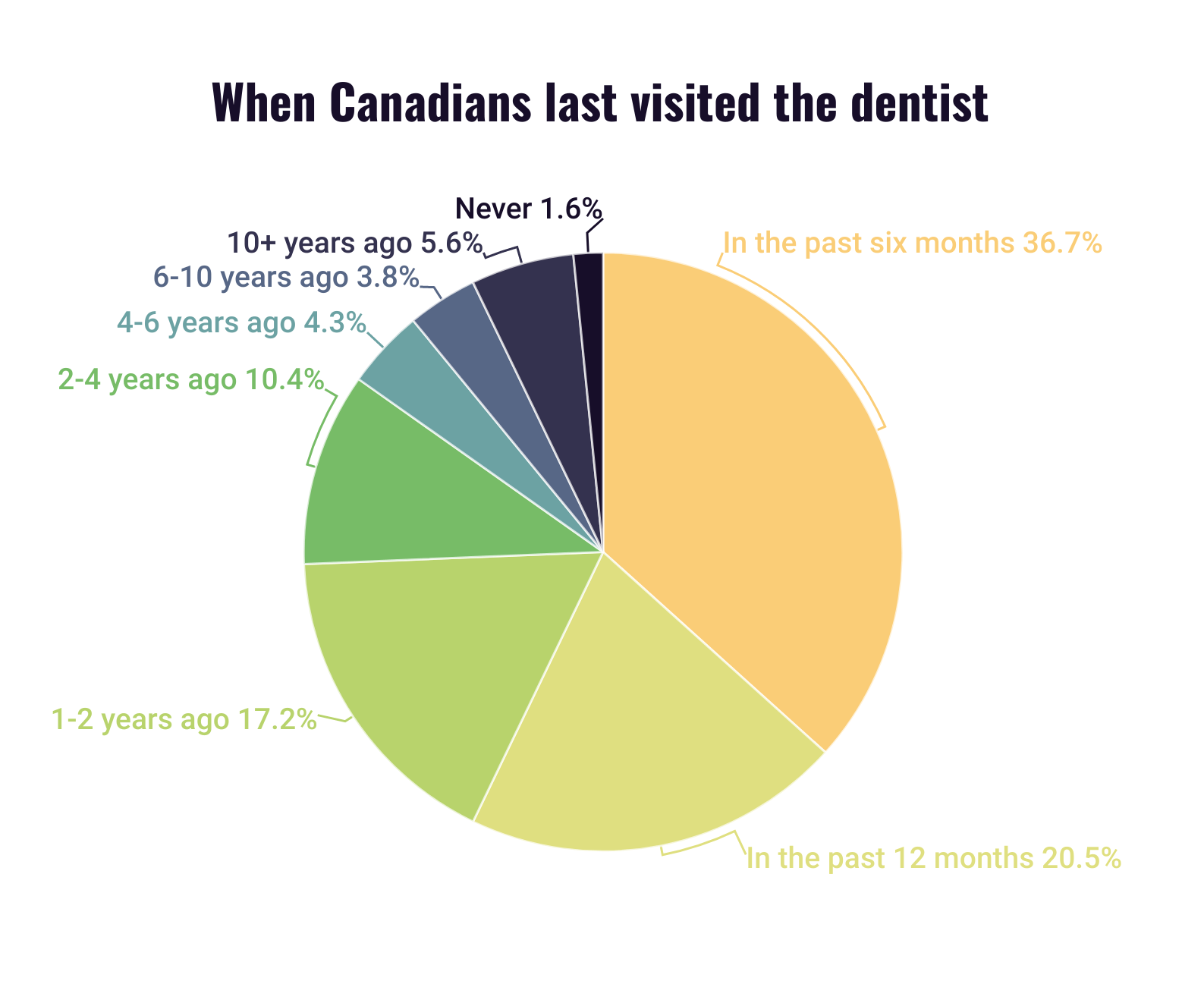
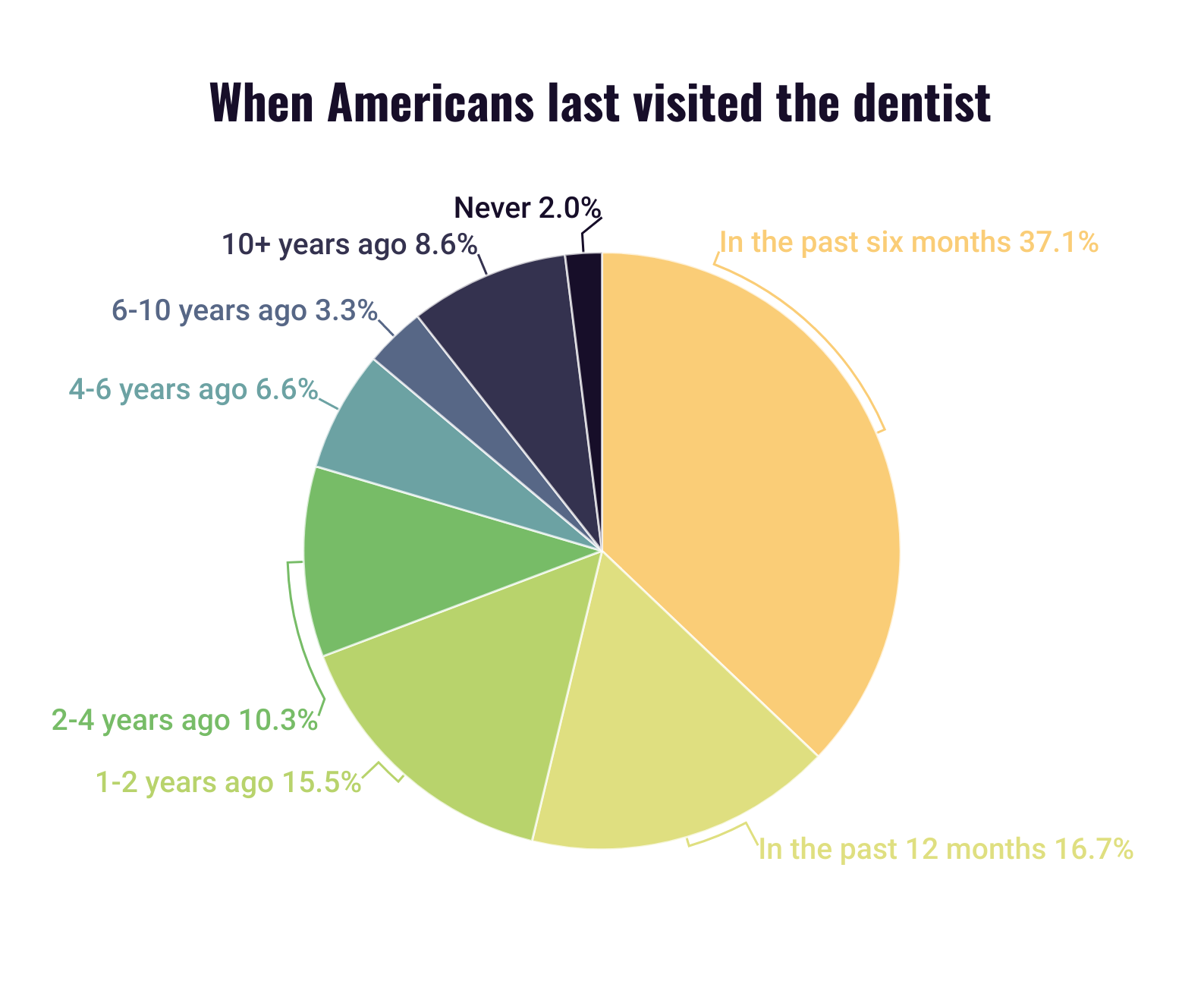
As for the reason for these dental visits? Well, all three countries saw similar figures for people only going in for a regular check-up with no teeth cleaning included (1 in 10 people), with over half of respondents going in for a dental check-up and coming out with a minty fresh smile as well.
Teeth whitening was also a popular procedure, with five per cent of Americans coming out with a blinding smile at the end of their last dentist visit, compared to only two per cent of Canadians and one per cent of Australians doing the same.
Teeth whitening was most prominent among Americans aged 35-44 years of age (12%), while just shy of one in every ten Americans aged between 25 and 34 were also showing off their pearly whites. For Canadians, teeth whitening was most common amongst 18 to 24 year olds (4%), while 3% of Canadians aged 35 to 44 years were also at the dentist for a quick shine for their last visit.
There were no major spikes across ages for teeth whitening in Australia.
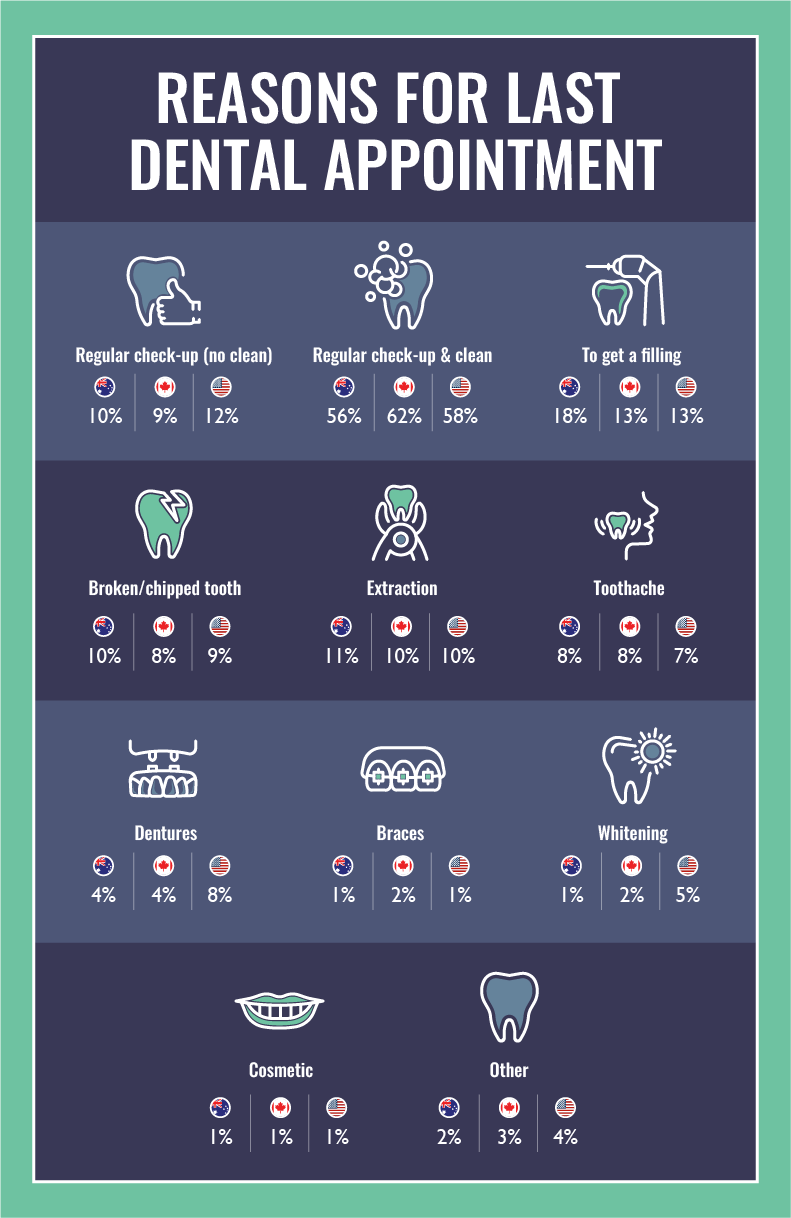
One possible reason why so many people are putting off going to the dentist for years (besides the fear of pain), may be related to the costs associated with a dental visit. Sometimes there’s no way of knowing what immediate fix people need before they’re in the chair, going from a simple check-up and cleaning to possibly fixing a chipped tooth. In these cases, private health insurance may be able to provide some financial relief for those who have dental extras cover.
Our research found that 53% of Australians, 66% of Canadians and 70% of Americans say that their health insurance either wholly or partially covers the cost of their dental visit, while 3% of Australians and Americans and 2% of Canadians don’t know if their policy covers dental work at all.
Click through the below tabs to see results in each country we surveyed.
Compare the Market’s Head of Health Insurance, Lana Hambilton, spoke about the value of getting dental extras cover as a part of your health insurance policy.
“It’s great to see so many people aware of what is covered by their health insurance policy, and what is not,” Ms Hambilton said.
“However, if you’re one of the 44 per cent of Australians who doesn’t have dental extras cover in Australia, and you make regular visits to your dentist for general dental treatments such as cleans or fluoride treatments, it may be worth considering an extras policy that includes dental.
“Depending on the level of cover you’re looking to get, you could be covered for regular check-ups and cleans or even more complex treatments if these turn out to be necessary, after serving any relevant waiting periods.
“One thing that people should keep in mind, is that the amount of dental work – and the amount that you can get back for these treatments – can vary from fund to fund, as well as on the level of cover you’ve selected on your policy. So, if you’re looking to take out dental extras cover, compare all the policies available, and check to see which one would be the better suited to you and your situation.”
Compare the Market commissioned PureProfile to survey 1,002 Australian, 1,006 Canadian and 1,008 American adults in May 2023.
1 Services Australia – Child Dental Benefits Schedule